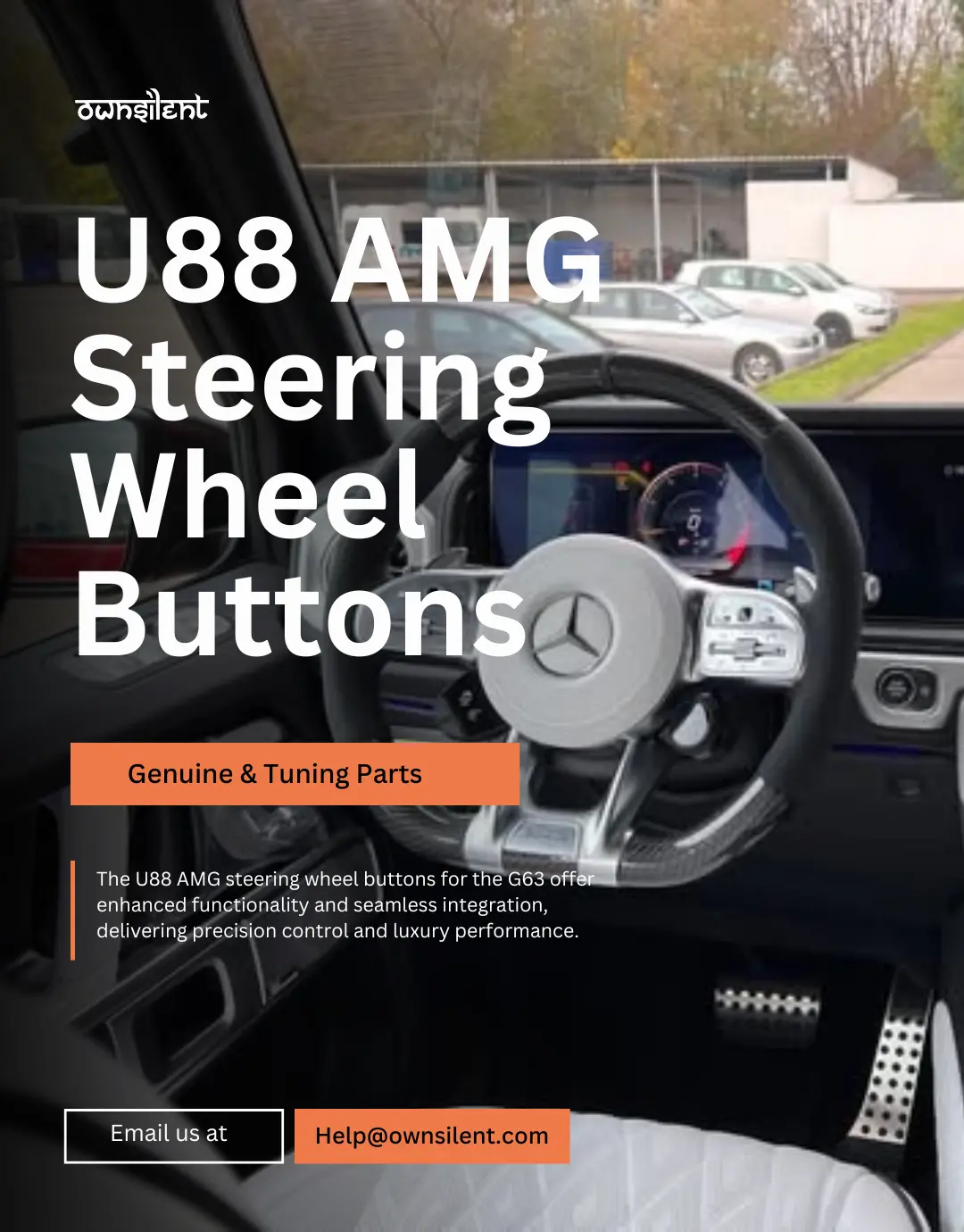Complete Theory of the Mercedes-AMG U88 Drive Unit
1. Overview
The AMG U88 Drive Unit is a sophisticated steering wheel-integrated control system engineered to optimize driver engagement, vehicle dynamics, and real-time performance management in Mercedes-AMG vehicles. Designed for track-oriented driving and high-performance scenarios, it bridges the gap between driver input and vehicular response through advanced hardware/software integration, enabling seamless control over critical systems without compromising safety or ergonomics.
2. Technical Architecture
Core Components
- Steering Wheel Module:
- Tactile Controls: Rotary dials, buttons, and paddle shifters for mode selection and function activation.
- Integrated Display: High-resolution screen for real-time telemetry (e.g., lap times, oil temp, turbo pressure).
- Microcontroller Unit (MCU): Processes inputs and communicates with the vehicle’s CAN (Controller Area Network) bus.
- Vehicle Integration:
- CAN Bus Interface: Facilitates bidirectional communication with the Engine Control Unit (ECU), Transmission Control Module (TCM), Electronic Stability Program (ESP), and Active Suspension System.
- OEM Wiring Harness: Ensures compatibility and minimal latency during retrofits.
Software Stack
- Firmware: Embedded code for interpreting driver inputs and translating them into CAN signals.
- Driving Mode Algorithms: Preconfigured profiles (Comfort, Sport, Sport+, Race) that adjust parameters like throttle mapping, shift aggression, suspension damping, and exhaust valve actuation.
- Customization Layer: Allows drivers to create bespoke profiles via companion software (e.g., Own Silent & Co.’s proprietary tuning suite).
3. Functional Principles
Real-Time Data Acquisition
- The U88 taps into the vehicle’s sensor network (e.g., accelerometers, wheel-speed sensors, turbo pressure sensors) via the CAN bus. Data is processed locally and displayed on the steering wheel screen, minimizing latency (<50ms).
Dynamic Mode Switching
- Instantaneous Adjustments: Selecting a driving mode (e.g., Race) sends a CAN message to the ECU, triggering predefined calibrations:
- Throttle Response: Linear → Aggressive mapping.
- Suspension: Adaptive dampers stiffen for reduced body roll.
- Transmission: Faster shifts with higher RPM hold.
- Exhaust: Valves open for reduced backpressure and louder acoustics.
Direct Function Overrides
- ESP Toggle: Temporarily reduces stability intervention for track use.
- Launch Control Activation: Integrated into Race mode for optimal acceleration.
4. Integration with Vehicle Systems
- OEM-Level Compatibility:
- The U88 mimics factory signals to ensure seamless communication with Mercedes-AMG’s M178/M177 engines and AMG SPEEDSHIFT transmissions.
- Uses manufacturer-specific CAN IDs to avoid conflicts with existing systems.
- Fail-Safes:
- Defaults to Comfort mode on ignition restart to ensure safety.
- Override commands are validated by the ECU to prevent unsafe parameter combinations.
5. Retrofitting Process
- Hardware Installation:
- Replacement of the factory steering wheel with the U88 unit, including wiring harness integration.
- Additional sensors (if required) for telemetry (e.g., oil temp probes).
- Software Coding:
- VIN-specific programming to enable U88 functionality in the vehicle’s central gateway.
- Calibration of driving modes to match the vehicle’s hardware (e.g., adaptive suspension, active exhaust).
- Validation: Post-installation diagnostics to ensure no fault codes and full system interoperability.
6. Performance Enhancements
- Track Optimization:
- Race mode deactivates comfort-oriented systems (e.g., auto start/stop) and prioritizes cooling.
- Adjustable torque distribution in AWD models (e.g., AMG GT 63 S).
- Driver-Centric Feedback:
- Haptic alerts for shift points or overheating.
- Lap timer integration for performance benchmarking.
7. Safety and Ergonomics
- Hands-On-The-Wheel Design: Tactile controls reduce distractions versus touchscreen interfaces.
- Redundant Safety Protocols:
- ESP cannot be fully disabled unless in Race mode with vehicle stationary.
- Suspension adjustments are limited at high speeds to prevent instability.
8. Validation and Testing
- Simulation: Virtual CAN bus testing to validate command structures.
- Durability Testing: Steering wheel modules undergo thermal, vibration, and moisture resistance trials.
- Track Validation: Real-world testing under extreme conditions (e.g., Nürburgring) to refine mode calibrations.
9. Aftermarket Philosophy
- OEM-Quality Assurance: Own Silent & Co. uses Mercedes-AMG’s technical documentation and factory tooling (e.g., XENTRY) for coding, ensuring warranties remain intact post-retrofit.
- Global Compatibility: Tailored kits for models like the G63, C63, and AMG GT series, accounting for regional CAN protocol variations.
10. Future-Proofing
- OTA Updates: Potential for firmware upgrades to support new vehicle models or features.
- AI Integration: Predictive mode switching based on driving style (e.g., learning driver preferences).
Conclusion
The AMG U88 Drive Unit exemplifies the fusion of motorsport-derived engineering and luxury customization. By centralizing control, enhancing feedback, and preserving OEM reliability, it redefines the relationship between driver and machine, transforming high-performance vehicles into track-ready instruments while maintaining daily usability. Its success lies in its ability to balance raw performance with intuitive design—a testament to Own Silent & Co.’s expertise in aftermarket innovation.
#AMGU88 #MercedesAMG #TrackReady #PerformanceEngineering







